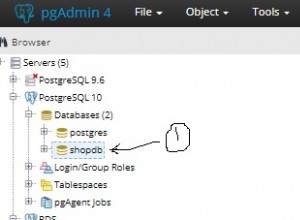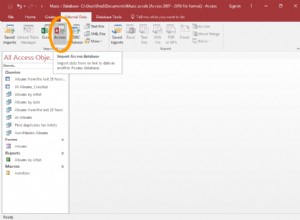Un modo molto diretto potrebbe essere questo (mentre @x è il tuo piano di esecuzione XML):
DECLARE @x XML=
N'<root>
<ElementE1 AttributA1="A1-text belongs to E1[1]" OneMore="xyz">E1-Text 2</ElementE1>
<ElementE1 AttributA1="A1-text belongs to E1[2]">E1-Text 2</ElementE1>
<ElementParent>
<subElement test="sub"/>
Free text
</ElementParent>
</root>';
DECLARE @idoc INT;
EXEC sp_xml_preparedocument @idoc OUTPUT, @x;
SELECT * FROM OPENXML (@idoc, '*');
EXEC sp_xml_removedocument @idoc;
Il risultato (non tutte le colonne)
+----+----------+----------+--------------+------+--------------------------+
| id | parentid | nodetype | localname | prev | text |
+----+----------+----------+--------------+------+--------------------------+
| 0 | NULL | 1 | root | NULL | NULL |
+----+----------+----------+--------------+------+--------------------------+
| 2 | 0 | 1 | ElementE1 | NULL | NULL |
+----+----------+----------+--------------+------+--------------------------+
| 3 | 2 | 2 | AttributA1 | NULL | NULL |
+----+----------+----------+--------------+------+--------------------------+
| 13 | 3 | 3 | #text | NULL | A1-text belongs to E1[1] |
+----+----------+----------+--------------+------+--------------------------+
| 4 | 2 | 2 | OneMore | NULL | NULL |
+----+----------+----------+--------------+------+--------------------------+
| 14 | 4 | 3 | #text | NULL | xyz |
+----+----------+----------+--------------+------+--------------------------+
| 5 | 2 | 3 | #text | NULL | E1-Text 2 |
+----+----------+----------+--------------+------+--------------------------+
| 6 | 0 | 1 | ElementE1 | 2 | NULL |
+----+----------+----------+--------------+------+--------------------------+
| 7 | 6 | 2 | AttributA1 | NULL | NULL |
+----+----------+----------+--------------+------+--------------------------+
| 15 | 7 | 3 | #text | NULL | A1-text belongs to E1[2] |
+----+----------+----------+--------------+------+--------------------------+
| 8 | 6 | 3 | #text | NULL | E1-Text 2 |
+----+----------+----------+--------------+------+--------------------------+
| 9 | 0 | 1 | ElementParent| 6 | NULL |
+----+----------+----------+--------------+------+--------------------------+
| 10 | 9 | 1 | subElement | NULL | NULL |
+----+----------+----------+--------------+------+--------------------------+
| 11 | 10 | 2 | test | NULL | NULL |
+----+----------+----------+--------------+------+--------------------------+
| 16 | 11 | 3 | #text | NULL | sub |
+----+----------+----------+--------------+------+--------------------------+
| 12 | 9 | 3 | #text | 10 | Free text |
+----+----------+----------+--------------+------+--------------------------+
L'id mostra chiaramente che l'algoritmo è prima l'ampiezza , non esiste id=1 (perché mai) e il nodetype permette di distinguere tra elementi, attributi e testo (fluttuante). Il prev la colonna punta a un fratello nella catena. Le colonne mancanti sono relative agli spazi dei nomi...
L'approccio con FROM OPENXML è obsoleto, ma questa è una delle rare situazioni in cui potrebbe essere ancora molto utile...
Ottieni un elenco con ID e ParentID che potresti interrogare con un CTE ricorsivo... Dipende da cosa vuoi fare con questo in seguito...




